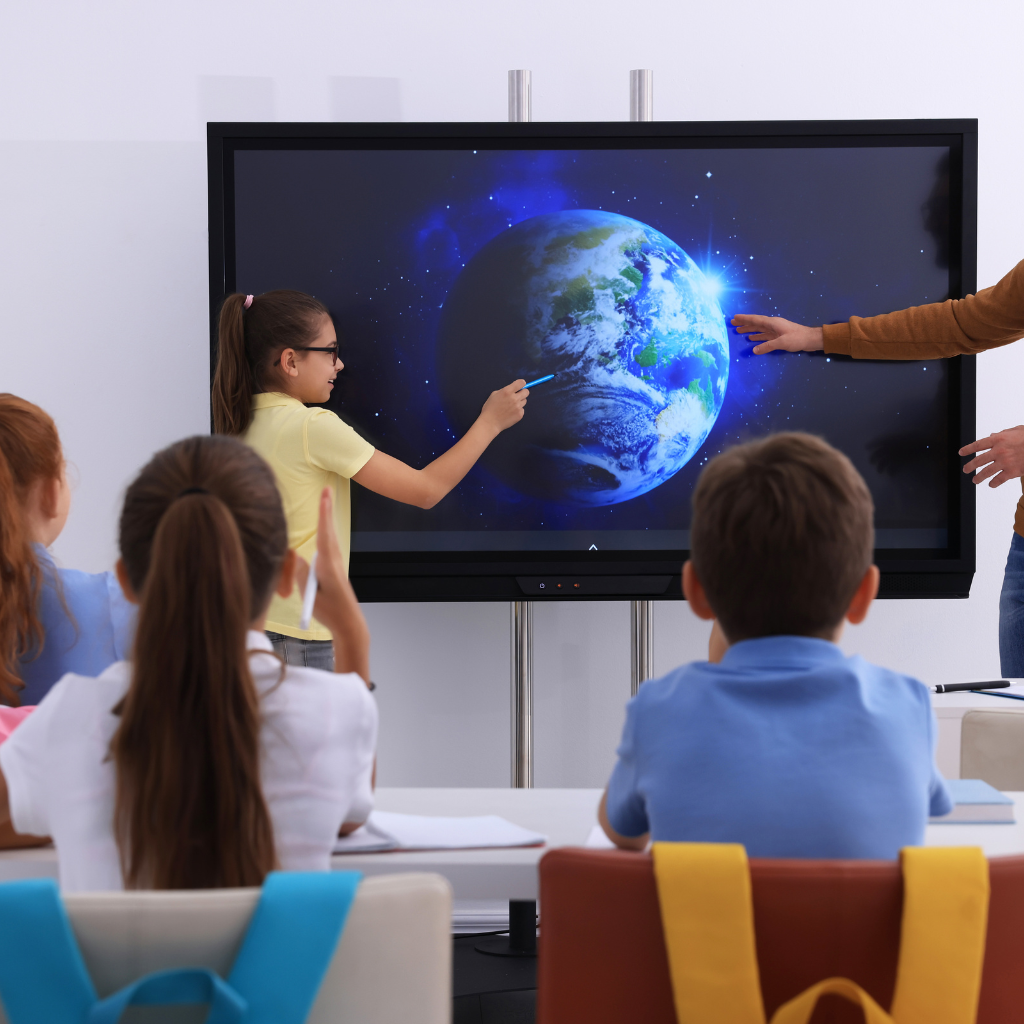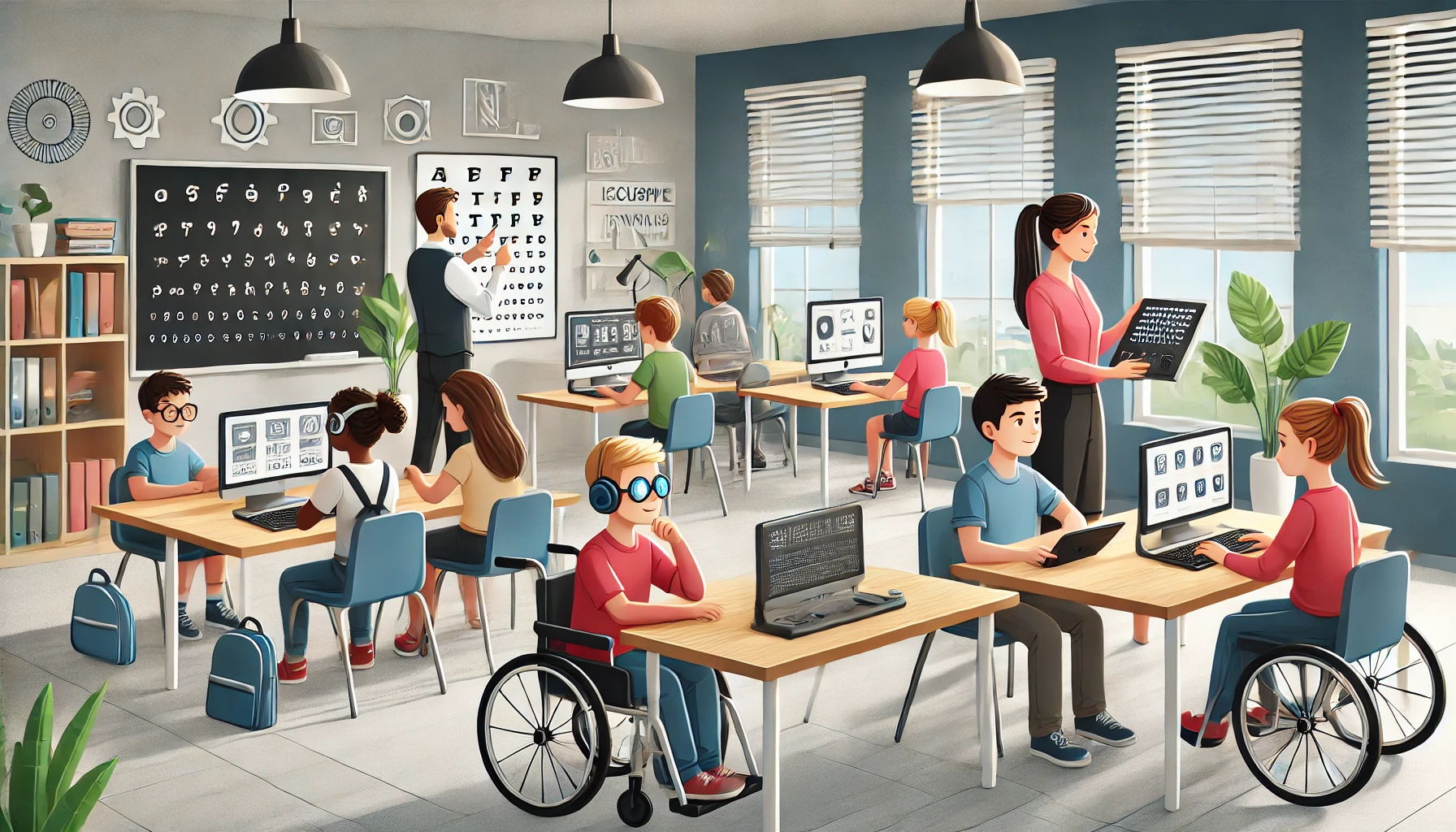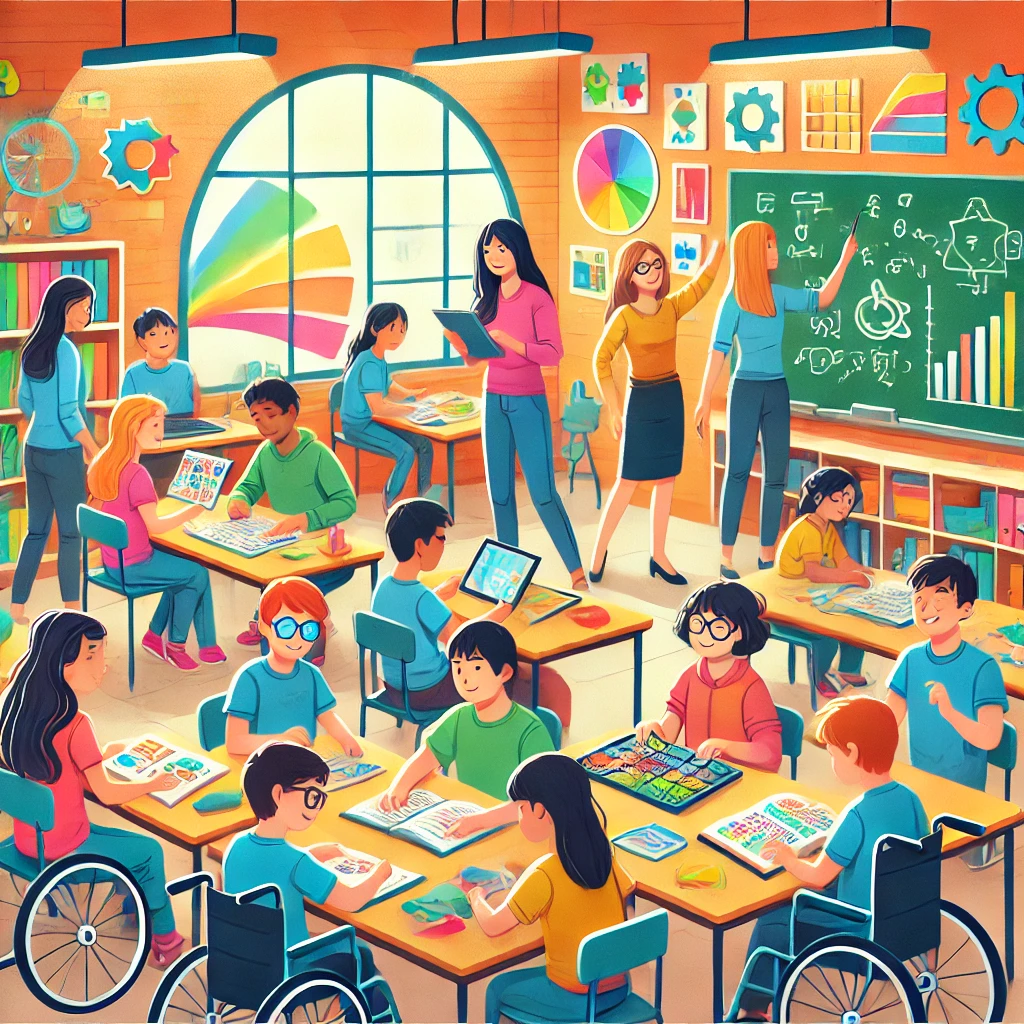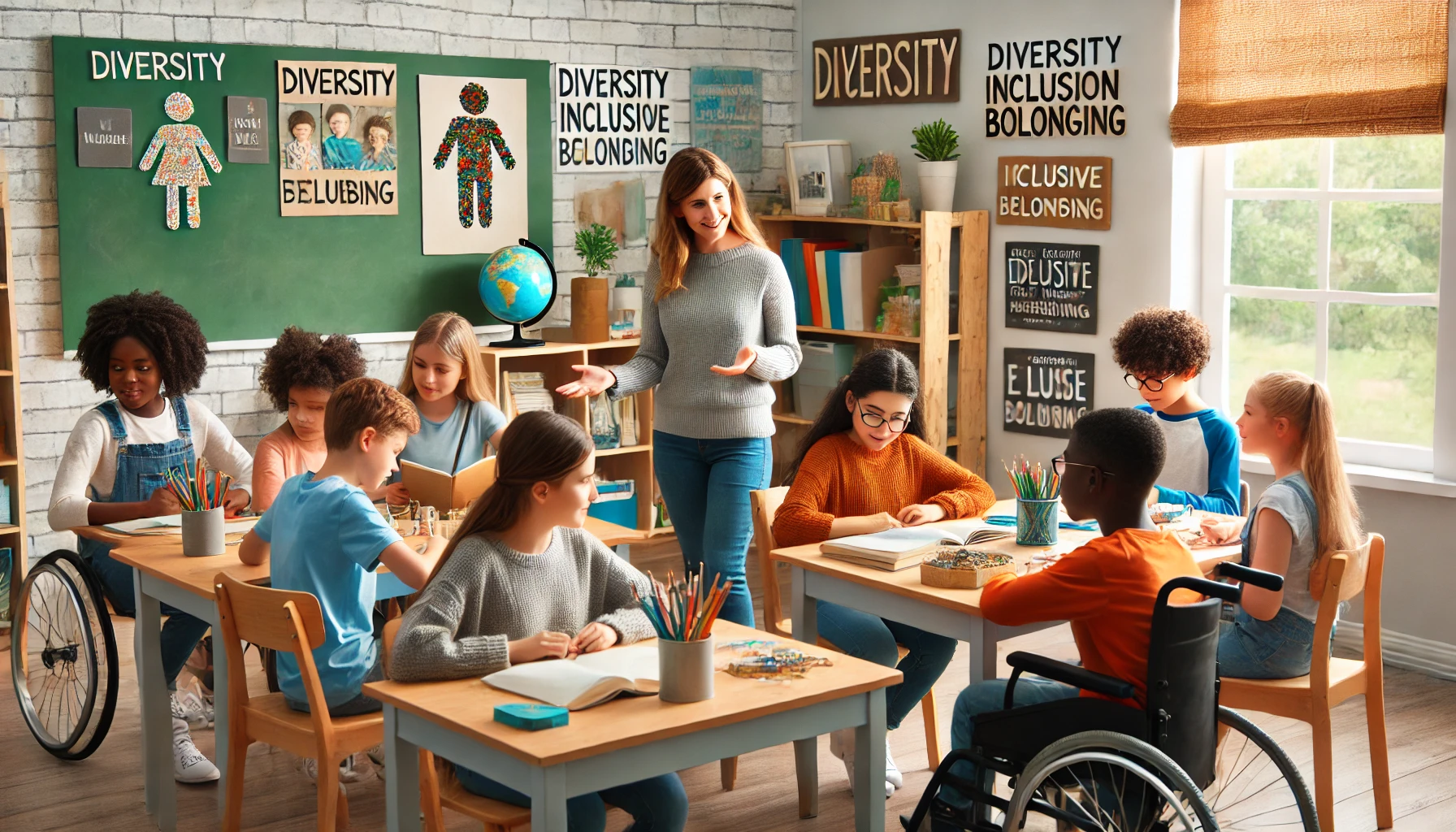Inclusive Education Foundations
Inclusive education isn’t a fancy buzzword—it’s about making sure every kid feels like they belong, right there in their neighborhood schools. So let’s break down the basics of making this idea work in real life.
Creating an inclusive classroom environment is fundamental to modern education. While some may view it as just another educational trend, building an inclusive classroom goes beyond buzzwords—it’s about ensuring every student feels valued and supported in their neighborhood schools. This guide explores practical strategies for developing and maintaining an inclusive classroom where all students can thrive.
Components of Inclusive Education
Inclusive education is built on some big ideas that shape how schools can be welcoming to everyone. Here’s what Kids Together Inc. has to say about it:
- Kids going to their local schools and learning in regular classrooms
- Getting all the support and services needed to succeed
- Feeling welcome and part of the school community
- Hitting those Individualized Education Program (IEP) targets
- Keeping the right mix of students in each classroom
- Prepping classes to handle all kinds of learners
- Teamwork and planning together
- Celebrating differences in every school activity
All these pieces help build a school atmosphere where every student, no matter who they are, can dive into learning and succeed, especially those who really need a bit of extra help.
Benefits of Inclusive Teaching
When schools adopt inclusive teaching, the whole community wins. By using smart strategies in the classroom, schools can:
- Make learning super engaging by reaching everyone’s different learning styles
- Create a place where every viewpoint is valued and respected
- Offer equal chances for education and personal development
Inclusive strategies aren’t just for students with special needs. They create a kindhearted and united classroom where everyone learns from one another. This approach makes sure every student can shine and play a significant role in their school community.
Strategies for Inclusive Teaching
Creating a classroom where every student feels like they matter involves a few simple tricks to make everyone feel at home, especially those needing a little extra support. The magic rules for getting this right include making the classroom feel like a warm hug and making sure everyone wants to get involved.
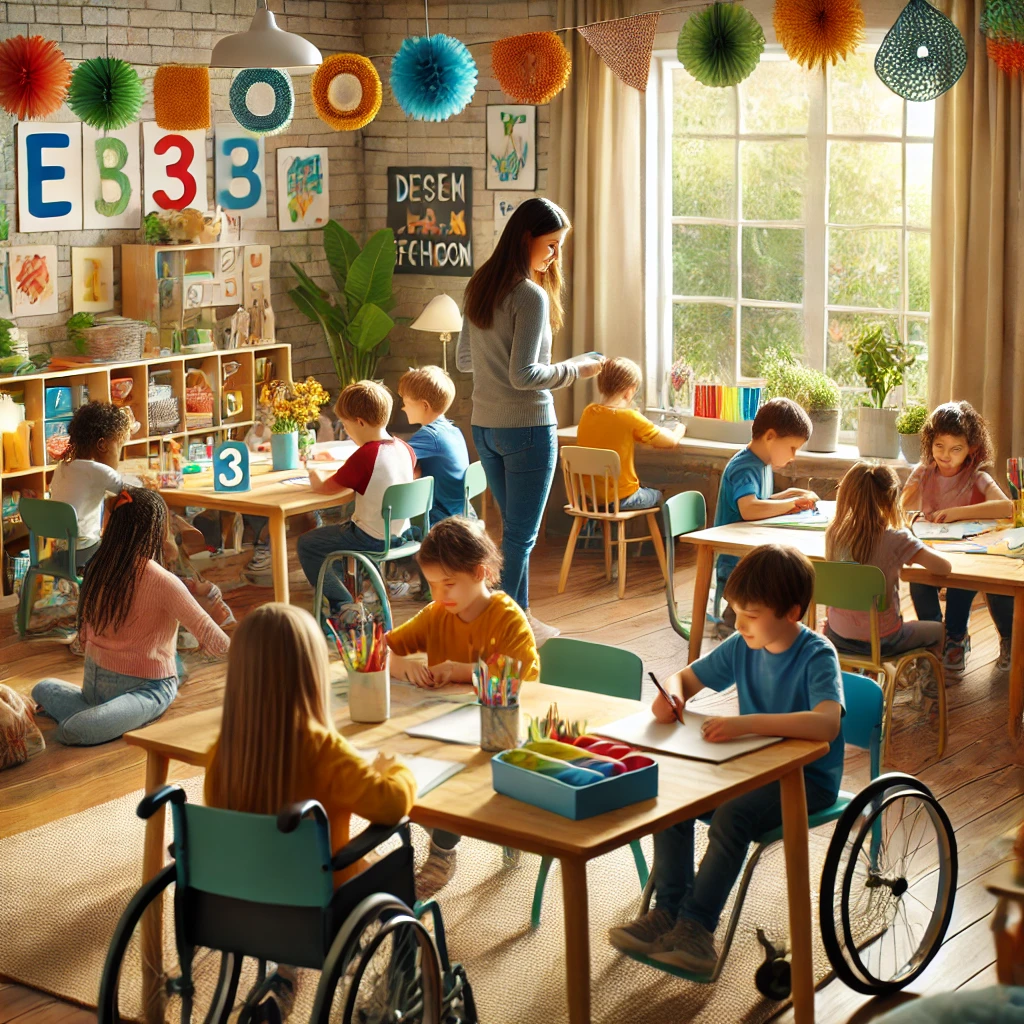
Building a Welcoming Classroom Climate
Step one in this good vibe classroom thing is setting up a space where everyone feels comfy from the get-go. Teachers need to be tapped into their own thoughts and feelings while keeping an eye on how students react and interact. Keeping the curriculum fresh and diverse, and having a good grasp of what makes an inclusive space, are key. By understanding who the students are and what they bring to the table, teachers can whip up a concoction that makes every kid feel like they belong, no matter where they’re from or how they learn.
It helps to dig into why some kids are louder than others and what role culture plays in group dynamics. Tweaking lesson plans and switching up teaching approaches can make sure everyone gets to join in, turning the classroom into a happy place for all.
Enhancing Student Engagement
Making sure students want to dive into learning is kind of like building a bridge to their world. Teachers are the builders, making sure every student, even those with special needs, finds a way to jump in with both feet. Using a mix of teaching materials and celebrating little wins along the way ensures that lessons reach all corners of the classroom.
Keeping tabs on students and chatting with the support squad helps fine-tune how to meet each student’s needs. Mixing and matching teaching styles and resources keeps learning fresh and caters to all kinds of learners. This does more than just boost grades; it builds a tight-knit crew where everyone feels like they have a part.
With the right vibe and a little engagement magic, teachers can carve out spaces where each student feels they can chill, support, and hit their goals. This not only lifts up students with special needs but gives everyone a leg up in the classroom.
Implementing Inclusive Education Lesson Plans
In the exciting adventure of inclusive education, creating lesson plans that click with every student is super important. Here, we’ll dig into two game-changing tools for inclusive teaching: Universal Design for Learning (UDL) and giving students choices.
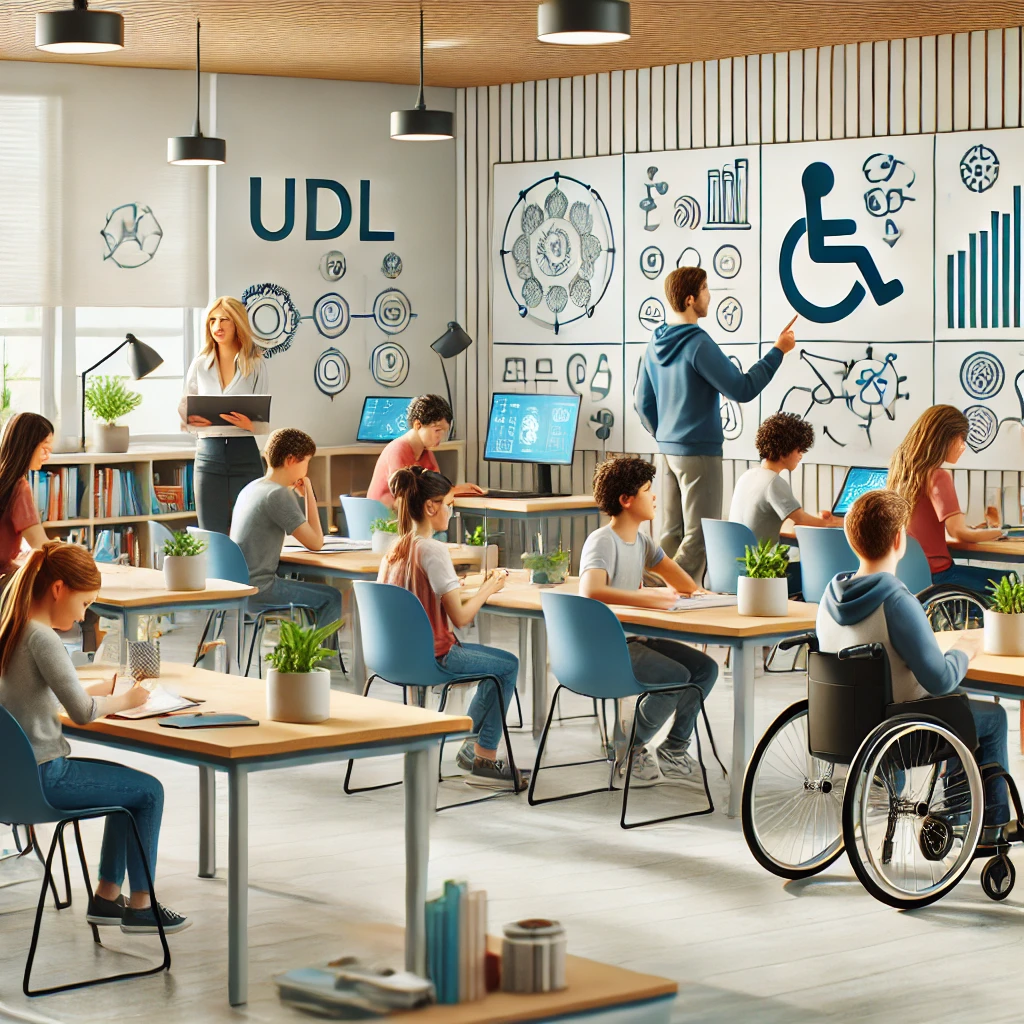
Universal Design for Learning
Universal Design for Learning (UDL) is all about keeping education chill and open-minded. It’s like a universal remote for teaching, making sure every student, no matter their learning groove, finds their channel. The magic of UDL lies in its flexible approach, where teachers whip up lessons that fit all sorts of learning vibes.
Think of UDL like recognizing everyone’s got their own dance moves. Some might follow a beat; others freestyle. Teachers mix methods, tools, and tests to keep things fresh and tailor-fit for everyone. This doesn’t just balance the playing field; it also builds a classroom where every kiddo feels they belong.
Remember when Howard Gardner talked about Multiple Intelligences? UDL is on that same track, seeing strengths in different styles. By using UDL in lessons, teachers can stir up a learning party that speaks to each student’s way of getting down with the material.
Providing Student Choices
Letting students have a say in learning is like throwing them the keys to their education car. It revs up their motivation and invites them to hit the road in a learning journey they’ve helped map out. When students pick how they show what they know, they drive the learning bus with more pep and pride.
Choices can turn a hum-drum assignment into a personal mission. Students who choose their path in projects or tests often step up learning and own it big time. This method tweaks lessons to fit individual tunes, offering plans that work better because they’re built with the kids’ voices included.
Through giving choices, teachers create a vibe where everyone’s accepted. Each student’s quirks and viewpoints get the nod, making lesson plans the driving force for better education outcomes and giving every student a chance to shine.
Collaborative Approach in Inclusive Education
Creating a truly inclusive school environment is like making a fabulous soup — it’s a group effort, and everybody’s got to bring something to the table. That’s where teamwork between teachers, families, and caregivers comes into play, ensuring kids, especially those with special needs, aren’t just at school but thriving.
Collaboration with Families
The recipe for a warm and inclusive classroom starts at home. Families are kind of like the secret ingredient that can make or break the whole dish. They’re not just onlookers; they’re partners in crime in this adventure called education. According to Brookes Publishing, involving families in education isn’t just nice — it’s crucial. Their insights, support, and even those awkward parent-teacher meetings are all steps toward a win-win learning environment.
A high five to educators who make reaching out to families a top priority! Open lines of chatter, mutual affection, and shared goals build trust and understanding. Teachers should dive into learning about each student’s strengths, quirks, and dreams by chatting with the fam. When educators and families join forces, they can whip up a support system that’s tailor-made for each kid, helping them feel they belong in their inclusive classroom crew.
Importance of Teacher Preparation
Give it up for teachers — they’re the rockstars in the classroom. Their gig isn’t just about marking tests and grading homework. In an inclusive setting, they’re crafting a learning space where every kid, no matter how they learn, finds a spot to shine.
Being a teacher in an inclusive setting means knowing your stuff inside and out. You’ve gotta be on your A-game when it comes to understanding and rolling out strategies for every learning style under the sun. The University of San Diego notes that excellent educators regularly connect with their students and education assistants to ensure everyone’s needs are checked off the list. They introduce materials that are as diverse as the students themselves, cheer on every bit of progress, and choose stories that all students can connect with.
Keeping teachers sharp as a tack through professional development is like refilling the school’s toolbox. Continuous learning keeps teachers up-to-date with the freshest strategies and trends, allowing them to craft lessons that hit the right notes for every student.
Teaming up with families and focusing on solid teacher prep lays the groundwork for a successful inclusive education system. It’s not just about hitting academic milestones; it’s about helping kids of all abilities to connect, belong, and grow.
Technology in Inclusive Education
Technology isn’t just for tech enthusiasts anymore – it’s a game-changer in classrooms, especially for students with special needs. Here, we dive into how tech can transform learning to make it a fair playground for everyone.

Integrating Technology in the Classroom
Let’s be real. Chalkboards are out; smartboards are in. Bringing tech into the classroom shakes up the traditional teaching methods and spices things up for all types of learners. Think of simple stuff like PowerPoints, educational games, and online homework – they’re not just bells and whistles. They actually boost how much students get involved and dig into the lesson (Drexel University School of Education).
With tech, teachers can mix-n-match lessons to fit how every student learns – whether they’re visual learners or need a little extra help. Digital gradebooks like PowerSchool keep everybody – teachers, parents, and students – in the loop about how things are going, making it easier to spot where someone might need a bit of a nudge (Drexel University School of Education).
Ensuring Technology Accessibility
Making sure tech is accessible to everyone is like making sure the sidewalk has ramps. Everybody can get to where they need to go, no matter if they’re on wheels or feet. When tech is friendly to students with disabilities, we’re talking about the whole package: hardware, software, and what’s on the screen.
Teachers have got to think about kids with different needs before rolling out the next tech gadget. It might mean getting special gear like screen readers, “talk-to-type” software, or keyboards that suit kids who can’t use the regular ones.
Also, when it comes to online materials, plain old text doesn’t cut it. Ensuring there’s a way to hear the text, or see captions on videos, means more students can jump in and fully get what’s being taught.
Harnessing tech to make learning inclusive isn’t an optional add-on. It’s about treating everyone with the fairness they deserve, giving each student—no matter their needs—a fair shot at getting a quality education. Doing that, we can make sure every learner, with or without special needs, feels included and supported in the classroom.
Overcoming Challenges in Inclusive Education
In the heart of inclusive education, teachers face loads of challenges to make sure every student, especially those with special needs, gets a fair shake at learning. Two big hurdles in inclusive education are sorting out technology gaps and boosting the future of inclusive schools.

Addressing Technology Inequities
Nowadays, technology is like the bread and butter of education, opening up a world of learning and resources for students. But guess what? Not everyone has equal access, which can mess with the whole inclusive education vibe. Educators and schools have to wake up to these gaps and get ahead of them.
As pointed out by Indiana University Bloomington, teachers, especially when teaching online, need to recognize the different tech setups students have. By understanding where everyone stands with gadgets, they can make sure nobody loses out because of tech issues. This understanding is crucial for creating a classroom where everyone gets to dive into educational material equally.
To tackle tech inequities head-on, teachers might think about handing out gadgets or helping with internet access, finding other ways to get assignments done, and setting up a tech-friendly environment that fits the bill for all students.
Promoting Future of Inclusive Schools
Pushing for schools that really include everyone means building a vibe of acceptance, backing, and variety in the school setup. Inclusive education isn’t just about making room physically; it’s about fostering a place where all students, no matter their walk of life or abilities, feel like they belong in the learning journey.
As UNICEF points out, making a truly inclusive setup calls for changes all over the place. At the school level, this might mean regular teacher training, making sure buildings are friendly to diverse needs, and providing learning gear that’s accessible. It’s also on the community to chip away at stigma, spread the good news about what inclusive education can do, and create a backing environment for all kids.
In the classroom, having a helping hand like paraprofessionals can really boost inclusivity. These folks are key in backing up teaching, dealing with varied student needs, and offering personalized help as needed, as Brookes Publishing states.
By diving into tech gaps and dreaming up a future where schools put every student’s overall well-being and academic success center stage, educators and everyone involved can steer towards crafting an inclusive and fair education setup for all.

